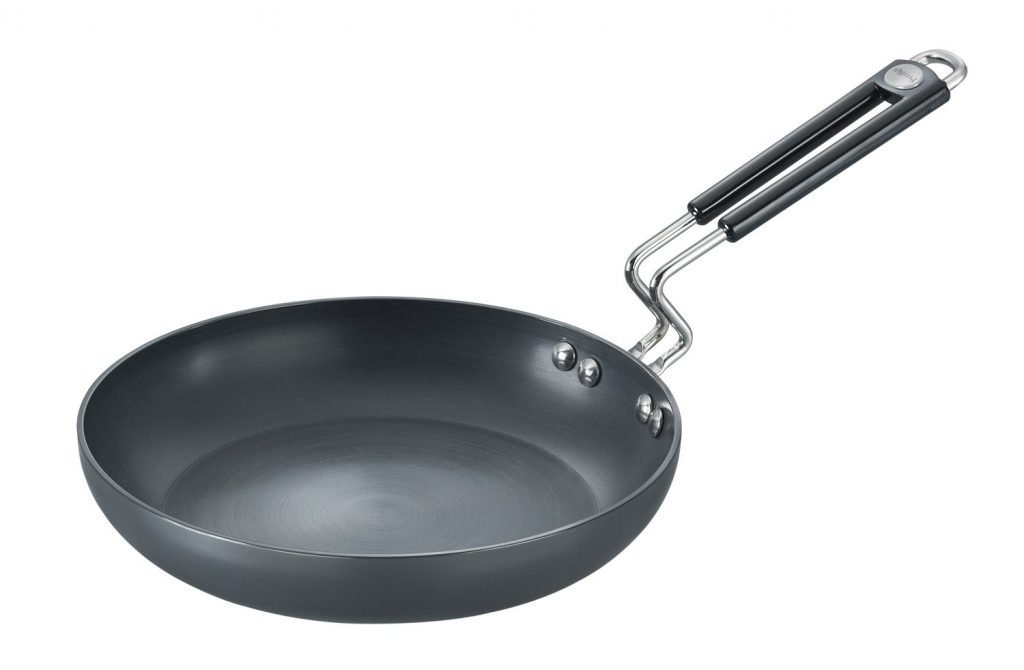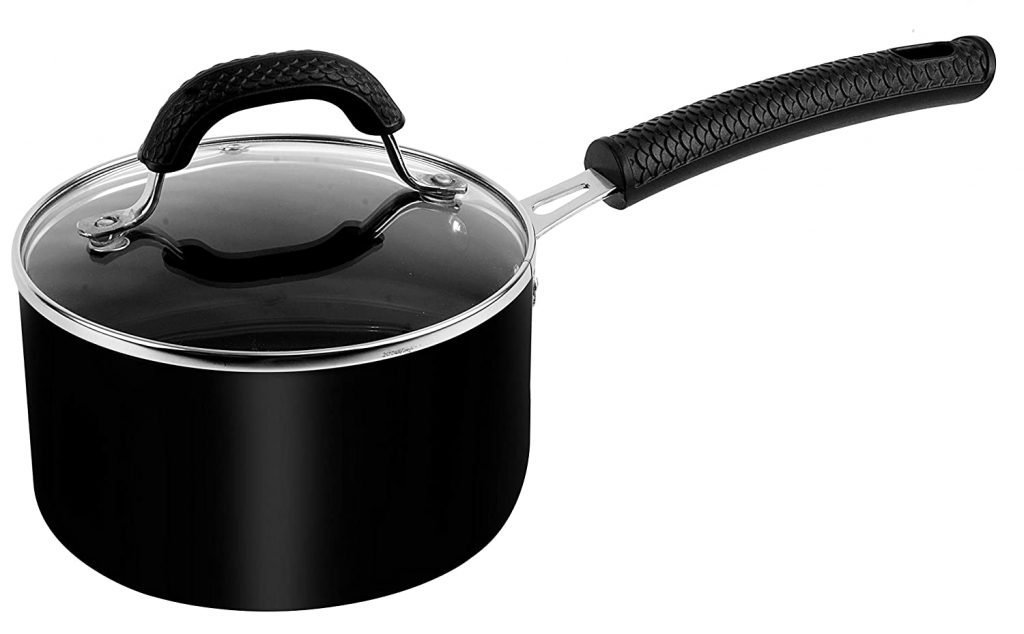There is no shortage of cookware on the market, making it tough to pick one based on its upkeep, durability, and price.
Nonetheless, everyone wants to invest in the best when it comes to cookware- after all, it is a matter of your family’s health. As a result, it’s critical to be aware of materials that are safe to use, while being cost-effective.
Being lightweight and inexpensive, aluminium is one of the commonly used materials for cookware. But, they leach aluminium. Though not conclusively proved, certain researchers have found a link between aluminium and Alzheimer’s disease. However, it isn’t clear whether it is causative or correlative. Yet another study has shown that aluminium ingested by the human body is excreted by the kidney. So, unless you have any kidney-related ailments, using aluminium needn’t be a cause of concern.
But even so, if you are alarmed by the ill effects of aluminium and are looking for an alternative, then, anodised aluminium could be an option to consider. Are they safe? What are its advantages and disadvantages? Let us explore this in detail.
How is anodized cookware made?

Anodized cookware is made using an electrochemical process, which turns aluminium much harder.
Aluminium is immersed in an acid electrolyte bath and then electricity is passed through it. A cathode is mounted inside the tank which contains the electrolyte bath and the aluminium cookware acts as the anode. When current is passed, the oxygen ions from the electrolyte combine with the aluminium to form Aluminium oxide.
This layer of aluminium oxide is hard, corrosion-resistant and highly durable, thus making it a preferred choice of cookware.
Related reading: Nonstick vs Hard Anodized Cookware
Advantages of anodized cookware
Many people have doubts about using anodized cookware. But the below-given advantages will give you a better understanding of why you should choose them.
- Anodized cookware is a good heat conductor. This means your food will cook faster. Also, as the heat is conducted evenly, there won’t be any hotspots on the pan.
- Anodized cookware is durable and strong. Thus, they have a long life and do not need replacement.
- The coating or layer of anodized cookware doesn’t peel like nonstick coating.
- Anodized cookware is comparatively lightweight.
- These cookware ranges have longer life as compared to other non-stick cookware.
- Anodized cookware is non-toxic as they do not use perfluorooctanoic acid (PFOA).
- Compared to stainless steel, anodized aluminium cookware are pocket-friendly.
- Anodized cookware is easy to clean.
- As they are non-reactive, you can cook any type of food without any worry about chemicals leaching into your food.
You may also like: 9 Things You Need To Know Before Buying A Dishwasher
Disadvantages of anodized cookware:
Everything has an equal share of both pros and cons. Likewise, anodized cookware comes with some disadvantages, as listed below:
- Anodised aluminium is not dishwasher safe. The detergent and rinse aid used in the dishwasher reacts with the anodised aluminium and effectively ruins its appearance and functionality.
- Though many people think that anodised cookware is non-stick. But it is really not so. You can cook without oil in a Teflon-coated pan. But in anodized cookware, you need to apply some oil to release the food. However, the oil consumed is lesser compared to stainless steel cookware.
- Without a doubt, the anodised layer lasts longer than Teflon coating you see on nonstick cookware. But, even so, after a few years of usage ( circa after 5 years ), this layer starts peeling off.
- Not all hard anodized cookware is induction-friendly. So, check the product description before buying them.
Hard-Anodized vs. Non-stick Cookware

Most non-stick cookware has a Teflon coating that prevents food from sticking to it. Teflon is actually a brand name of the non-stick coating from Chemours. Similarly, Carote uses a coating from ILAG, a Swiss-based company, Hawkins uses one from a German manufacturer and so on. It is better to opt for brands that use coating from EU manufacturers as they have better safety standards.
The pans with nonstick coating practically don’t need oil for frying. However, it is not the same with anodised aluminium.
Most anodised aluminium cookware need some oil to release food without sticking to the base. The quantity required is far lesser than stainless steel or cast iron cookware. But if you buy a hard anodised frying pan hoping to fry with minimal oil, you will be disappointed.
Let us look at how anodised cookware fares in other important aspects like cooking temperature, durability and ease of cleaning.
Cooking Temperature
Anodised aluminium cookware is highly heat resistant. Unlike nonstick cookware, you needn’t worry about damaging the coating by overheating. Also, they don’t warp or bulge like aluminium or nonstick cookware.
Unlike cast iron, they don’t form hot spots either as they conduct heat evenly. Hot spots usually occur in poor quality cookware where certain parts get extremely hotter than other areas. Next time you make a Dosa in the cast iron Tawa and you see some parts browner than the other, then, that is the hotspot of your cookware.
However, anodised aluminium doesn’t retain heat like cast iron cookware.
Durability
Compared to nonstick cookware, anodised aluminium are far more durable. The anodised layer lasts for around 5 years without peeling. If you are careful and use only soft non-abrasive scrub, it could last even longer.
However, they are not as durable as cast iron and stainless steel, which can practically last decades or even a lifetime.
Ease of Cleaning and Maintenance
Anodised aluminium has a comparatively smooth surface which makes it easier to clean. It is ideal to use a non-abrasive scrub and dishwashing liquid like Vim or Prill to clean it. If there is any stubbornly stuck burnt residue, you can let it soak in soapy water and clean it after a while. But, it is not dishwasher safe.
Non-stick cookware, on the other hand, is pretty easier to clean as they rarely have burnt residues on them. But, just like anodised aluminium, they are also not dishwasher safe.
Comparatively, anodised aluminium is much easier to clean than stainless steel, which is highly susceptible to burnt residues. But, stainless steel is dishwasher safe.
Is Hard Anodized Cookware Safe?

Most studies are in favour of using hard anodised cookware as a safer alternative to nonstick. Though nonstick cookware is easier to use, its health hazards are known to all.
The anodic layer of hard anodized cookware is non-reactive. They don’t leach any aluminium or chemicals into your food. So, you can safely use it to cook any dish.
However, after a few years of use, the top layer may develop scratches, exposing the aluminium underneath. In such a case, it is better to discard the cookware, especially if you have any kidney-related ailments.
Conclusion
Overall, anodised aluminium is a safer alternative to nonstick cookware. They are durable, easy to clean, smooth and non-porous. Though they may not last as long as cast iron or stainless steel, considering its advantages, ease of use and minimal maintenance, it is definitely an option worth considering.
